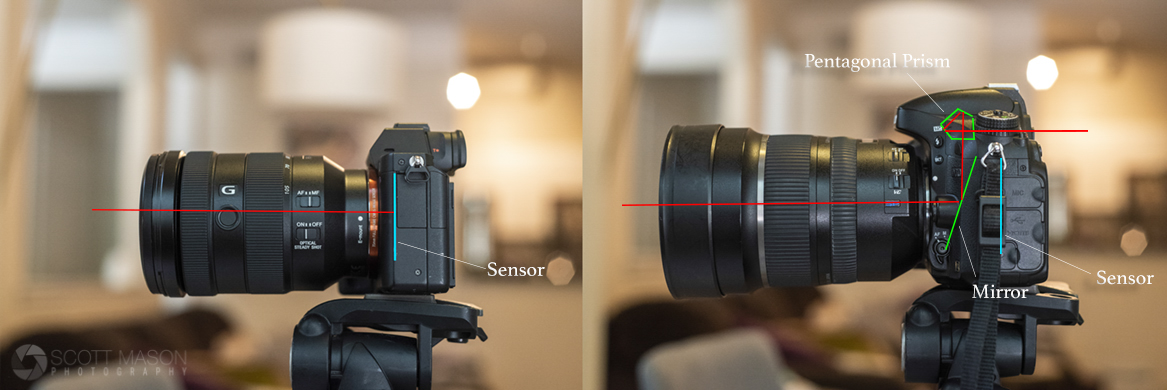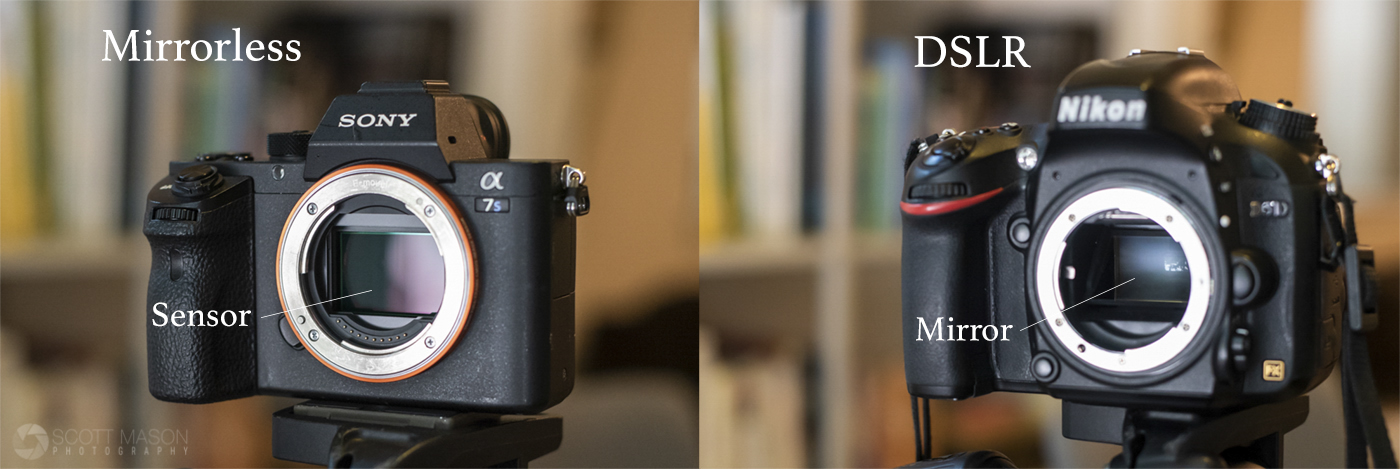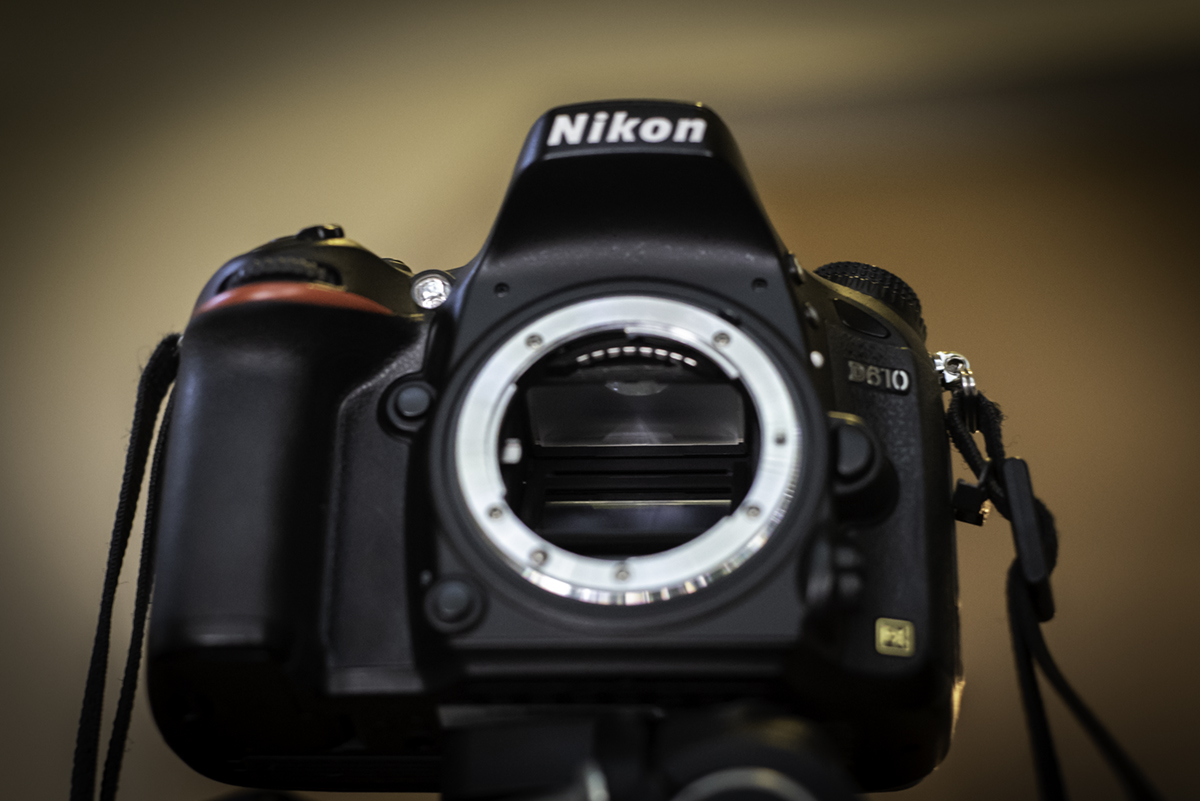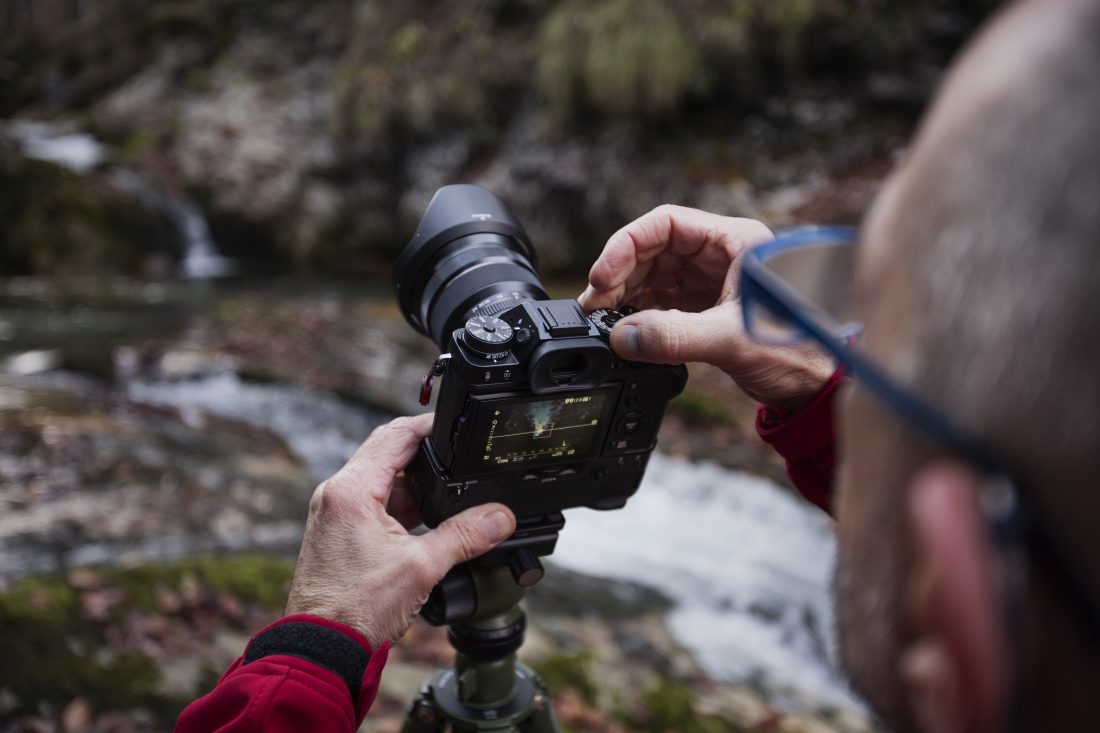Should You Buy a Mirrorless or DSLR Camera in 2019?
With the rise of improved mirrorless camera technology, many photographers and consumers alike are wondering which camera platform is superior right now. In current camera technology, the two main contenders are DSLR and mirrorless. Which platform you choose depends on a variety of factors. Let’s break those down and explore which camera format is better for specific applications.
DSLR Cameras
DSLR stands for Digital Single-Lens Reflex. These cameras operate in the same basic fashion as many older 35mm film cameras. A mirror inside the body reflects into a pentagonal prism, allowing the photographer to see the image through the viewfinder. This same mirror flips open when the shutter is depressed, exposing the image. In modern digital cameras, light is exposed to the sensor rather than a film negative (the method with film cameras).

DSLRs were the camera of choice for professionals for decades, but preference has been changing as mirrorless technology has been catching up to DSLR. Mirrorless cameras are quickly becoming more tempting for pros to switch to — or at least add to — their arsenal.
But why are some professionals sticking with their DSLRs?
Pros of DSLR
- Battery life: DSLRs generally have longer battery life, though newer mirrorless technology is catching up. Keep in mind that if you plan on shooting video for an event, you will want a camera with a long battery life so as to not interrupt important moments of an event with a battery change. (Of course, regardless of the camera system, you can always carry extra batteries.)
- Image quality: There are more DSLR cameras to choose from, especially if you’ve decided on a full frame sensor. Though full-frame cameras are more expensive, they do produce less digital noise, larger resolution, and images that are more vivid and sharp. Although there are several full-frame mirrorless cameras to choose from, you have more options in DSLRs.
- More lenses: As DSLR cameras have been around so much longer, there are far more lens options for this format (though more lenses are becoming available for mirrorless). It’s true that you can use lens converters between camera makes, but this usually reduces the lens’ functionality, most commonly the ability to autofocus.
- Better autofocus speed, especially on fast-moving objects. This is ideal for people wanting to shoot sports or nature.
Cons of DSLR
- More intrusive: The snapping shutter sound that DSLRs make while shooting can be an issue in noise-sensitive shooting environments such as a quiet church during a wedding ceremony, a small meeting of executives, or in nature photography. Many modern DSLRs have a “Quiet” shooting mode, but shutter noise is just reduced, not eliminated. Quiet mode “works” by changing the timing of the shutter opening and closing, which creates a slightly less jarring sound than the typical “chk-chk” of a quick shutter exposure.
- Less compact: The size and weight of DSLR camera setups can make them cumbersome, especially when your shoot involves lots of walking.
- Slower shoot speeds: DSLR and mirrorless cameras are both capable of shooting many frames per second, but the mirror in a DSLR can limit the absolute top speed of shooting.
Mirrorless Cameras
Mirrorless cameras expose images similarly to DSLRs, but without a mirror between the viewfinder and lens.

In the mirrorless camera (left), the sensor is continuously exposed to light coming through the lens. For DSLR (right), a mirror redirects the light into the viewfinder until the shutter is depressed.
While mirrorless is relatively newer technology, these cameras have more recently caught up with DSLRs and are now being taken more seriously by professionals who previously didn’t see their relative advantages (lightweight, quieter, etc.).
Most professionals who have been shooting DSLR platform long-term didn’t even consider making the big switch until 2018, when several impressive mirrorless models were announced, including first-ever mirrorless camera systems from Nikon and Canon. This was a bold move for the two leading companies who previously produced only SLR technologies. They were no longer willing to sit back and watch Sony, the leader in mirrorless cameras, overtake them in sales.
Why is Sony doing so well with mirrorless? Just look at the following “pros.”
Pros of Mirrorless
- Great video quality: Most modern mirrorless cameras have 4K and 1080P abilities. That makes a great low-end option for vloggers and novice videographers on a budget. Mirrorless cameras also have more sophisticated live-focusing technology which is useful for video.
- Focus peaking: This is another video feature that most DSLRs don’t have. Focus peaking is a digital display feature that highlights exactly where the scene is in focus, typically by means of a blue overlay on the image.
- Both EVF (electronic viewfinder) and rear display can achieve focus zoom, which can only been seen on the rear displays of DSLRs.
- Lightweight and portable: Both the size and the weight of mirrorless cameras are more convenient than DSLRs. Not only are mirrorless camera systems easier to fit into travel bags, they are relatively lightweight, therefore less of a physical burden than high-end DSLR setups on long shooting excursions.
- Image / Exposure preview: The LCD panel on the rear of mirrorless cameras gives you an accurate preview of both the image area and the exposure before the image is even taken. Incremental changes to the various exposure settings show up in real time, which can help you nail down an exposure that could be more challenging to properly gauge with a DSLR. This feature is especially useful for less experienced photographers who haven’t yet mastered exposure settings.
- Completely silent shooting is an option. However, this feature can create an uncertain moment for traditional DSLR loyalists who are so used to feeling and hearing the mirror flip. The shooter can be thrown off by this seamless shooting. I’ll admit that I had to adjust to this after my first mirrorless purchase.
Note how in the video above, the rear LCD displays the live image until it senses movement near the viewfinder, then shuts off. This is the point at which the electronic viewfinder kicks in — more on those soon.
- Sensor placement: Many shooters argue that the absence of a mirror protecting the sensor leaves the camera more vulnerable to dust and debris on the sensor. This vulnerability has been debated, but whether true or not, the sensors in mirrorless cameras are closer to the front opening and this sensor placement can, I think, be classified as an advantage for cleaning. Cleaning DSLR mirrors can be tricky and stressful.
Cons of Mirrorless
- Electronic Viewfinder (or EVF): The image inside some EVFs can appear “jumpy.” And consistent with their sensors’ limitations, the electronic viewfinder is less effective in low light than that of a DSLR viewfinder.
- Processing lag: The image in the EVF has a slight delay, so what you’re seeing is, unlike the SLR viewfinder’s image, slightly behind what’s happening in real time. However, these lags are typically fractions of a second in most mirrorless cameras so this disadvantage is very slight. Newer models typically suffer even less form this issue. There are other types of “lag” that can accompany mirrorless shooting. For more info on the subject, read this in-depth article from Fstoppers that talks more about these issues.
- Less full frame camera body and lens options.
Summary
The answer to “Should I buy a mirrorless or DSLR?” really depends on the relative importance you put on budget, image quality standards, convenience, and any other factors important to you. For the record, I own both DSLR and mirrorless cameras, since I shoot both still photography and videography. I like each platform for certain applications.
Make sure to do your research and carefully weigh your options before pulling the trigger on any camera system, since your choices will determine your future lens and accessory purchases as well.
What made you switch to a mirrorless system, or stick to DSLR? Please share your reasons in the comments section below.
Other similar articles:
How Much Do I Charge for Photography (2019)? 5 Steps to Take
Streaklight 360 – A Powerful, Portable Must-Have For Every On-Location Photographer
8 Pieces of Gear Photographers Need for Weddings/Events





No Comments